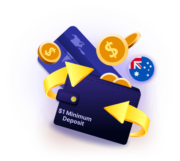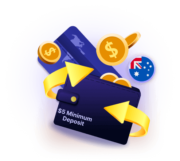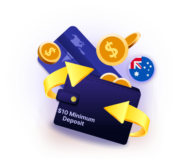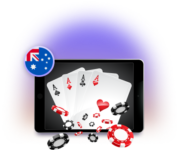The influencer economy has exploded in the past decade, reshaping industries from fashion to finance. Now, it’s infiltrating another booming sector – gambling. From pokies jackpots on TikTok to Instagram betting wins, gambling content is everywhere. And in Australia—a nation known for high gambling participation—the trend hits especially hard.
What began as casual clips has become a digital subculture. These social media gambling influencers in Australia are building loyal audiences, shaping perceptions of gambling, and raising important questions about responsibility and impact. Let’s explore who’s driving the trend and its real-world consequences.
The Rise of Social Media Gambling Influencers in Australia
On TikTok and Instagram, you’ll easily find creators spinning pokies, celebrating bets, or showcasing luxury trips “funded by wins.” This new breed of influencer blends gambling with aspirational lifestyle content—poolside bets, luxury brands, and exotic destinations.
Social media gambling influencers in Australia are framing gambling not just as a risky habit but as an exciting, glamorous, and even accessible part of a fun, carefree lifestyle. This clever blend of glamour and entertainment keeps audiences watching and coming back for more.
Their content often features behind-the-scenes glimpses of their daily lives, trips to casinos, flashy clothes, and moments of high energy and celebration. This aspirational lifestyle sells not just the game, but a dream.
From Pokies to Profits: Why Audiences Are Hooked
These videos are visually addictive. Spinning reels, flashing lights, and high-energy commentary offer instant thrills—even just by watching.
Audiences feel part of a digital community. Comments are filled with fans cheering wins and sharing their own experiences. This sense of inclusion and the illusion of easy money keep people engaged and invested.
What’s often missing, however, is balance. Losses are rarely shown, creating a skewed view of gambling as mostly profitable and rarely dangerous. This selective storytelling is key to why many viewers find themselves hooked.
Viral Accounts Leading the Trend
Some standout personalities are leading this wave. AussieCasinoBros on TikTok livestream pokies sessions with a casual, matey tone, drawing over 200,000 followers.
On YouTube, TheBettingBloke mixes sports analysis with betting tips—his weekend multis often go viral. Meanwhile, PokieQueenAU adds glamour with Instagram reels showing her nightlife and casino trips, earning over 150,000 followers.
These social media gambling influencers in Australia are redefining how younger audiences interact with gambling, transforming it from a private activity to a public spectacle.
How They Monetise and Influence Behaviour
Behind the glamour lies a monetisation machine. Influencers earn through affiliate links, sponsored content, and partnerships with betting sites. Some receive flat fees, and others get commissions based on the number of followers they sign up.
Some influencers even organise giveaways and competitions sponsored by casinos, further encouraging audience engagement.
But this commercial model can be harmful. When followers see consistent wins and branded links, they may be more likely to gamble without being fully aware of the risks involved.
The Social Impact of Gambling-Focused Influencer Culture
One major concern is exposure to young viewers. Platforms like TikTok don’t always filter gambling content, and flashy visuals often appeal to teens and young adults.
Studies show that many followers are aged 16–24, and this group is still forming ideas about money, risk, and self-control. When social media gambling influencers in Australia present gambling as fun and rewarding, it can shape how young people view it for life.
Young viewers might start to see gambling as a normal, everyday form of entertainment, which can increase the risk of problem gambling down the line.
Normalising Risk: A Hidden Concern
The constant feed of jackpots and high-stakes bets can shift social norms. Gambling starts to look normal, and even smart.
Few influencers highlight losses or downsides, which can distort reality. As risk is glamorised, viewers may underestimate the real costs of gambling and the potential for addiction.
This normalisation of risk has public health implications, especially in communities already vulnerable to gambling harm.
Public Backlash and Calls for Accountability
Watchdogs, psychologists, and media outlets are sounding alarms. Experts from groups like the Australian Gambling Research Centre warn that gambling content may encourage addictive behaviours.
With few rules in place, influencer content often goes unlabelled and unregulated. Health experts argue it needs stronger oversight, especially for underage viewers.
Journalists have also investigated cases where influencers fail to disclose sponsorships, raising ethical concerns.
Regulation Is Coming
Australian regulators are taking note. The ACMA has acted on illegal gambling promotions before, and influencers may be next.
Future rules could include clear disclaimers, stricter age gating, and limitations on affiliate deals. Given similar action on crypto and health products, gambling content is likely due for tighter control too.
Industry stakeholders are now debating balancing creative freedom with consumer protection.
Can Influence Be Used Responsibly?
Not all creators are pushing risky content. Some promote safer gambling and show the full picture. RealTalkGamblingAU, for example, shares his losses, sets deposit limits, and warns about addiction risks.
Others include helpline info or avoid shady partnerships. These influencers prioritise transparency and honesty—building trust without glamorising gambling.
Their approach may be key to a more sustainable influencer culture around gambling.
What Platforms and Followers Can Do
Platforms like YouTube and TikTok can play a role: content warnings, age restrictions, and algorithm tweaks could help limit harm.
Followers also need media literacy. Understanding affiliate links, questioning constant wins, and recognising curated content helps protect viewers from unrealistic expectations.
Empowering audiences with knowledge is essential in the battle against misleading content.
Conclusion
Social media gambling influencers in Australia are reshaping how gambling is consumed by glamourising, monetising, and spreading it to new audiences. Their reach is powerful, and their content persuasive.
But with that influence comes responsibility. Whether through regulation, platform changes, or better audience awareness, Australia must act fast to ensure gambling content doesn’t come at the cost of public health.
The future of this influencer culture depends on balancing entertainment with ethics and care.
















